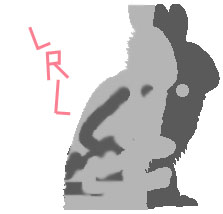
derek beaulieu
I have recently completed a page-by-page response to E.A. Abbott’s Flatland, a Victorian science-fiction satirical novel which posits a two-dimensional universe inhabited by entirely by polygons.
For each page of Abbott’s novel I have traced, by hand, a representation of each letter’s occurrence across every page of text. The generated result is a series of superimposed seismographic images which reduce the text in question into a two-dimensional schematic reminiscent of EKG results or stock reports.
This project builds upon my previous work in concrete poetry, and a theorizing of a briefly non-signifying poetic, where the graphic mark of text becomes fore-grounded both as a rhizomatic map of possibility, and as a record of authorial movement.
Much as the Victorian novel A Human Document gave rise to Tom Phillips’ ongoing graphic interpretation A Humument, Flatland has resulted in a book-length interpretation of the graphic possibilities of a text without text.
Derrida, writing on Blanchot, asked “How can one text, assuming its unity, give or present another to be read, without touching it, without saying anything about it, practically without referring to it?” Each page of my graphically-realized Flatland is a completely unique, diagrammatic representation of the occurrences of letters. By reducing reading and language into a paragrammatical statistical analysis, content is subsumed into graphical representation of how language covers a page.
Flatland attempts – much like Simon Morris’ Re-writing Freud (2006), Vito Acconci’s “Transference” (1969) and other texts of conceptual literature – to flatten the plane of text.__________
derek beaulieu lives in Calgary with his young daughter. He is the author, or co-author, of 3 books of poetry, and co-editor of "Shift & Switch: new Canadian poetry." His latest book, "Flatland" will be published this fall by information as material (UK).